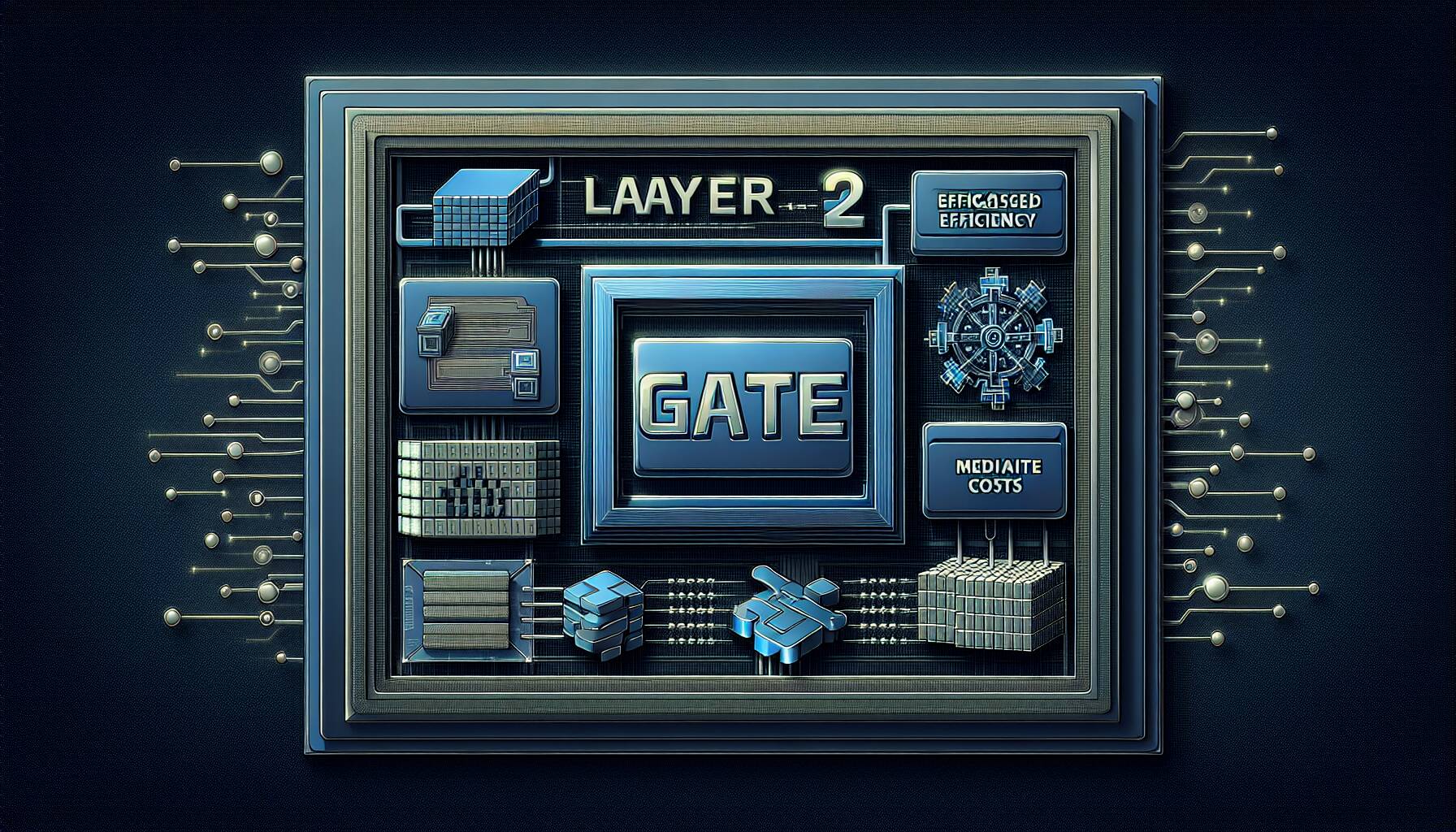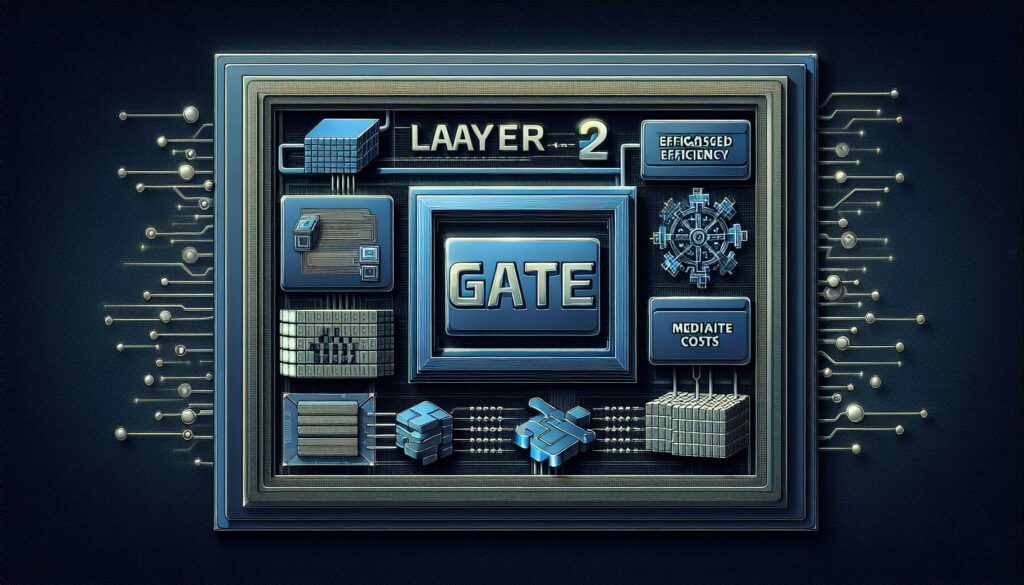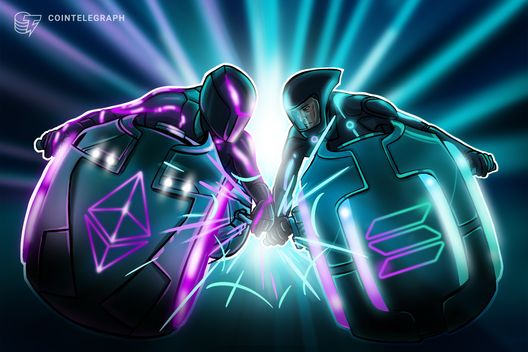In a significant development within the cryptocurrency landscape, the crypto exchange Gate has introduced Gate Layer, its proprietary Layer 2 blockchain aimed at enhancing transaction efficiency and minimizing costs. This announcement, made via email on Wednesday, highlights Gate’s ambitious “All in Web3” vision, leveraging a platform built on the OP Stack and fully compatible with Ethereum, while utilizing GateChain as its settlement layer.
Through this launch, Gate is not only augmenting its blockchain capabilities but is also upgrading its GT (GateToken) ecosystem. Key features of Gate Layer include the rollout of innovative tools such as Perp, a perpetuals hub designed to deliver centralized exchange-level liquidity; Gate Fun, an easy-to-use incubator for new token launches; and Meme Go, which serves as a real-time cross-chain meme token tracker. These offerings aim to enhance user experience and engagement within their growing ecosystem.
“Gate Layer is envisioned as the backbone of our comprehensive Web3 strategy,” the company emphasized in its announcement.
In a strategic move, GT will now act as the exclusive gas token for Gate Layer, continuing its unique dual burn model, which has already seen over 180 million GT tokens burned—accounting for approximately 60% of the initial supply. This innovative approach mirrors a broader trend in the industry, as other major exchanges like Coinbase are also launching their own Layer 2 solutions, seeking to capture a greater share of user activity on-chain.
By integrating advanced infrastructure with tailored tokenomics, these exchanges are not just positioning themselves as trading platforms but are striving to become full-stack Web3 providers, enhancing liquidity and expanding their ecosystems in the ever-evolving cryptocurrency market.

Gate Layer Launch Overview
The introduction of Gate Layer by the crypto exchange Gate brings significant changes to the digital currency landscape.
- Launch of Gate Layer: A new Layer 2 blockchain aimed at enhancing transaction throughput and reducing transaction costs.
- Built on OP Stack: Gate Layer is fully compatible with Ethereum, ensuring smooth integration and functionality.
- Settlement Layer: GateChain will serve as the settlement layer providing stability to transactions.
- Tools and Features:
- Perp: A perpetuals hub designed to offer CEX-level liquidity.
- Gate Fun: A no-code incubator facilitating token launches.
- Meme Go: A cross-chain meme token tracker that operates in real time.
- Exclusive Use of GT: GT (GateToken) will be the solely accepted gas token for transactions on Gate Layer.
- Token Burn Model: Continues with a dual burn model, with over 180 million GT burned, accounting for around 60% of the initial supply.
- Industry Trend: Gate’s initiative aligns with platforms like Coinbase, which are also developing their own Layer 2 solutions, aimed at increasing user engagement on-chain.
- Strategic Positioning: By integrating infrastructure with native tokenomics, Gate aims to deepen liquidity, expand its ecosystem, and evolve into a comprehensive Web3 provider beyond just a trading venue.
Readers involved in cryptocurrency and blockchain technology may find these developments crucial for understanding the future of digital trading infrastructure and investment opportunities.
Comparative Analysis of Gate Layer’s Launch in the Blockchain Exchange Landscape
Gate’s debut of Gate Layer marks a strategic pivot in the competitive landscape of cryptocurrency exchanges by offering a specialized Layer 2 solution that enhances transaction capacity and minimizes costs. This move not only aligns with similar initiatives by industry giants like Coinbase and its Base platform but also underlines a critical trend where exchanges aim to innovate beyond mere trading capabilities.
Competitive Advantages: Gate Layer’s construction on the OP Stack and its compatibility with Ethereum provide significant leverage. This enables seamless integration with existing DeFi projects, thereby attracting users seeking enhanced functionality without sacrificing familiarity. The introduction of tools like Perp, a hub for perpetual contracts with centralized exchange liquidity, positions Gate to seize market share by appealing to traders accustomed to traditional platforms. Additionally, the implementation of GateToken (GT) as the exclusive gas token adds an incentive for users to engage with the ecosystem, bolstering retention through its dual burn model, which has already seen the reduction of 180 million tokens.
Potential Disadvantages: However, Gate Layer faces potential challenges, including the saturated market of Layer 2 solutions where exchanges must distinguish their offerings in a crowded space. User trust remains a significant hurdle, particularly when contrasting Gate’s relatively newer technology against established networks like Optimism or Arbitrum, which currently enjoy robust user bases. Furthermore, the reliance on GateToken could pose risks if the asset’s value fluctuates considerably, impacting network activity.
The primary beneficiaries of Gate Layer’s launch are likely to be active traders and developers within the Web3 space who prioritize lower fees and increased speed. Additionally, projects seeking a no-code incubator or tools for seamless token launches can leverage Gate’s offerings to streamline their entry into the market. On the flip side, smaller exchanges may find it challenging to compete as major players enhance their infrastructure and ecosystems, potentially leading to further consolidation within the industry.

















